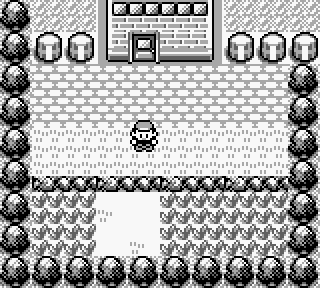So yeah, since Saturday - in between working part-time - I've managed to squeeze in roughly 14 hours.
That's only slightly longer than half a full day, no problem.
Pokemon Blue, and indeed mostly all of the generation leaps have been played at some point - except from the newest Nintendo DS and 3DS renditions of Black/White, Black/White 2 and X/Y.
Thus, this has so far been one helluva nostalgic trip; and playing it through the Super Nintendo's official Game Boy adapter - Super Game Boy - has enabled me to play the Game Boy game on the full 40" Full HD screen. Is there a better use of HD? I think not. Especially when pixels are enlarged to the size of clenched fists, I imagine.
 |
| The border surrounding the middle screen is added with the Super Game Boy that's used to display original Game Boy games on the big screen, when inserted into the cartridge slot of a Super Nintendo. |
We were all conversing, while I ploughed on - tirelessly training up my Pocket Monsters, exploring wildernesses, buildings and nearby Pokemon battles - and it sparked a few moments of realization within me.
I recalled what we'd discussed in our first lesson of the course, and how we personally determine what something is within a game. We used Space Invaders as an example, and explored how the sprites used in this were - subjectively - determined as a 'tank' or a 'ship'. It was essentially based on what we'd experienced playing the games, personally and subjectively, forming our own narrative within these simple yet thought-provoking worlds.
And as the graphical power at the time - for both Pokemon and Space Invaders - was limited to the technology and hardware they were being created for, it adds to the sense of nostalgia in then determining or justifying what you think an object really is, or can be, just from a sprite or two - and how the limited use of animations, sprites and pixels were used to represent a character, item, creature or environment.
With the example above, I remembered - through playing and exploring the world for the first time, properly, since I was younger - that small, charming additions such as the trees, the blades of grass, the obstructions - of which I assume, but not sure, are concrete pillars - contribute towards a personal connection to the world and environment.
Minimal to today's standards sure - mainly because of the technological limitations of the Game Boy at the time - thus further explorations and releases of the franchises - as with most sequels and updates of games - strive to implement more graphical power, and thus, easily recognizable objects, trees and characters/creatures.
Of course, that's easier to suggest as technology has improved so much that it's simpler to have a realistic looking tree - at a specific size, and with a specific amount of sprites or polys - than it was back then.
And this leads me to recent video games, mostly independently released, through individual companies or teams, that appear to recently set the graphical presentation to the levels of games like the original Pokemon titles - Blue/Red/Yellow/Gold/Silver/Crystal - and provide old-school presentations, with elements that provoke throwbacks and nods to these technical marvels of days past.
Games such as, essentially, the entire selection from my previous post - albeit, some more than overs, in graphical representation; pixels/sprites - provide great influence in the way the game looks and the animation plays out - as intentionally basic as it may first appear.
With games like Home, the main character's animation is essentially a few frames strong, and as such has a quirky, charming approach to his walking. This choice, I feel, gives the player a sense of their own personal ownership of that character's movement, and how it impacts the player to the point that - in some cases - some animation can be so obscure, even if only walking, or jumping, or crouching, that it can generate a laugh, or a comment.
It's almost as though the use of pixels within a game is an artistic direction, rather than a technological restriction, and games like Sword and Sworcery thrive on the artistic representation of a very modernized video game.

No comments:
Post a Comment